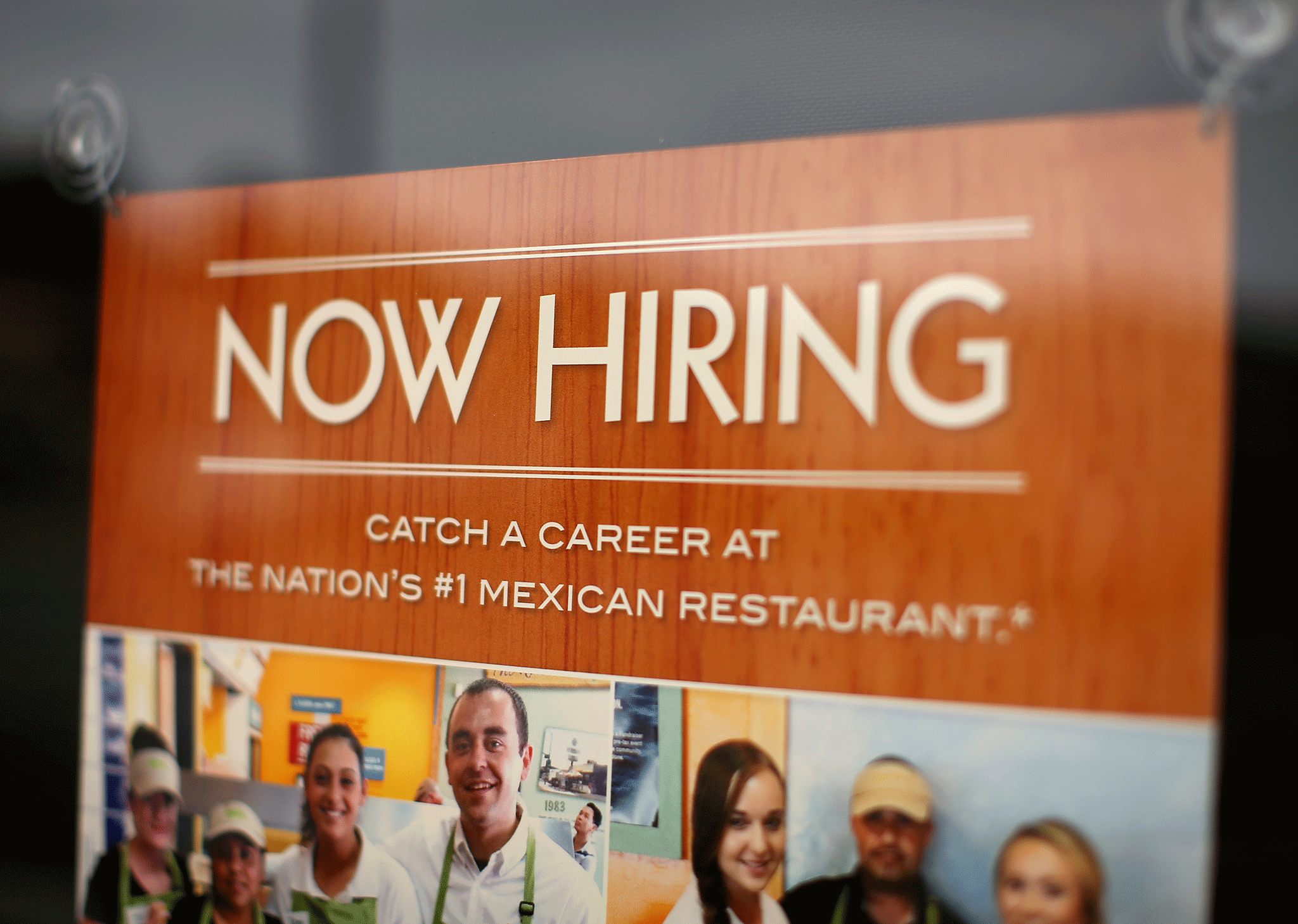US adds 156,000 jobs as economy shows signs of resilience
Steady progress will encourage Federal Reserve policy makers to follow through on their forecast for an interest-rate increase by the end of 2016.

Employers in the US continued to add to payrolls in September as people streamed into the workforce and most found jobs amid record openings, indicating the US labour market is settling into a pace that will support the economy.
The 156,000 increase followed a 167,000 rise in August that was more than previously estimated, a Labour Department report showed on Friday. The median forecast in a Bloomberg survey of economists called for a 172,000 advance. The jobless rate rose to 5 per cent as the labour participation rate ticked up.
While payroll additions have slowed from last year, they’re still above what economists say is needed to accommodate labour-force growth, as employers face a limited pool of available and qualified workers. Steady progress will underpin further wage gains and consumer spending, the main driver of US expansion this year, and encourage Federal Reserve policy makers to follow through on their forecast for an interest-rate increase by the end of 2016.
“Job gains are slowing down a bit but it’s not such a concern,” Scott Brown, St Petersburg, Florida-based chief economist for Raymond James Financial Inc, said before the report. “What matters is that the job market is getting tighter. The fundamentals look strong for consumer spending.”
The labour market is playing a key role in the race for the White House. Republican presidential nominee Donald Trump has focused on job losses in manufacturing that he attributes to failed trade deals. Democratic candidate Hillary Clinton has nodded to Americans’ worries about declines at factories while defending President Barack Obama’s record in helping the economy heal after the worst downturn since the Great Depression.
September payrolls have tended to disappoint when the initial data are released, based on data since the last recession ended. Estimates of 87 economists in the Bloomberg survey ranged from gains of 125,000 to 220,000. August was initially reported as a 151,000 increase.
Revisions to prior reports subtracted a net 7,000 jobs from payrolls, as July’s figure was lowered to 252,000 from 275,000.
The unemployment rate, which is derived from a separate Labour Department survey of households, rose as employment increased by 354,000. The jobless rate was projected to hold at 4.9 per cent, according to the survey median, close to the lowest since 2007. The participation rate, which shows the share of working-age people in the labour force, increased to 62.9 per cent, from 62.8 per cent. It has been hovering close to the lowest level in more than three decades.
Private employment, which excludes government agencies, rose by 167,000 after a 144,000 increase the prior month. Government payrolls fell by 11,000, the most in a year, as local education jobs dropped.
The report also showed differences across industries. Service providers, which include restaurants, business services and health-care, are typically less exposed to headwinds — such as the stronger dollar and tepid overseas economies — than manufacturers.
Payrolls at factories fell by 13,000, after a 16,000 drop in the previous month, while construction jobs rose by 23,000. Retailers increased payrolls by 22,000. Employment in leisure and hospitality rose 15,000, the smallest in four months.
Business news: In pictures
Show all 13Wages showed less of a pickup than projected, as a sustained acceleration has been elusive in the current expansion that began in mid-2009. Average hourly earnings rose by 0.2 per cent from the prior month, compared with the 0.3 per cent median estimate of economists. Worker pay increased 2.6 per cent over the 12 months ended in September, following a 2.4 per cent gain the prior month.
The average work week for all workers rose to 34.4 hours from 34.3 hours. With the unemployment rate low, Fed officials have been focusing on other measures that suggest there’s still slack in the labour market. Americans who are working part-time though would rather have a full-time position, or the measure known as part-time for economic reasons, fell by 159,000 to 5.89 million.
The underemployment rate — which includes part-time workers who’d prefer a full-time position and people who want to work but have given up looking — held at 9.7 per cent.
Bloomberg
Subscribe to Independent Premium to bookmark this article
Want to bookmark your favourite articles and stories to read or reference later? Start your Independent Premium subscription today.

Join our commenting forum
Join thought-provoking conversations, follow other Independent readers and see their replies